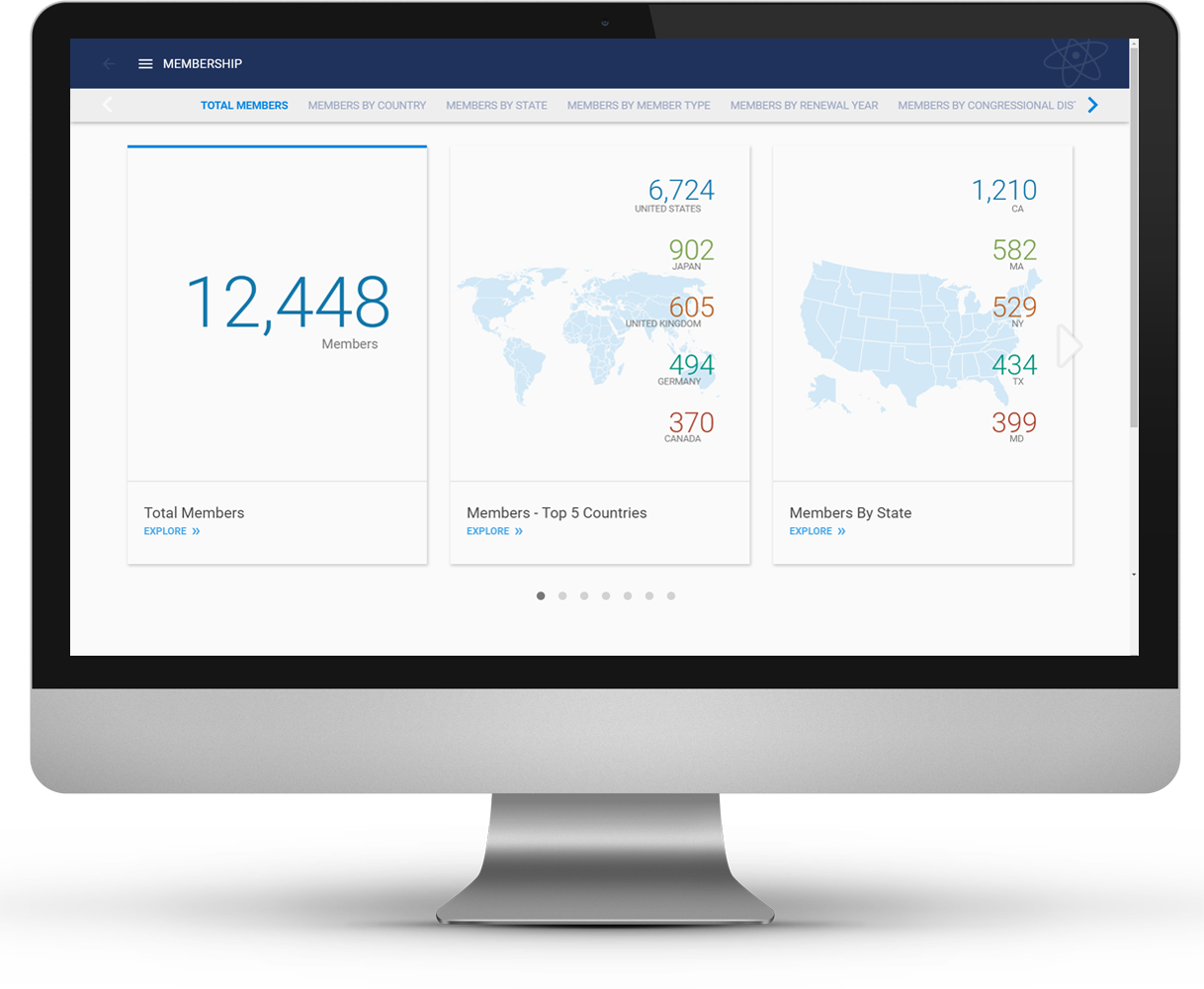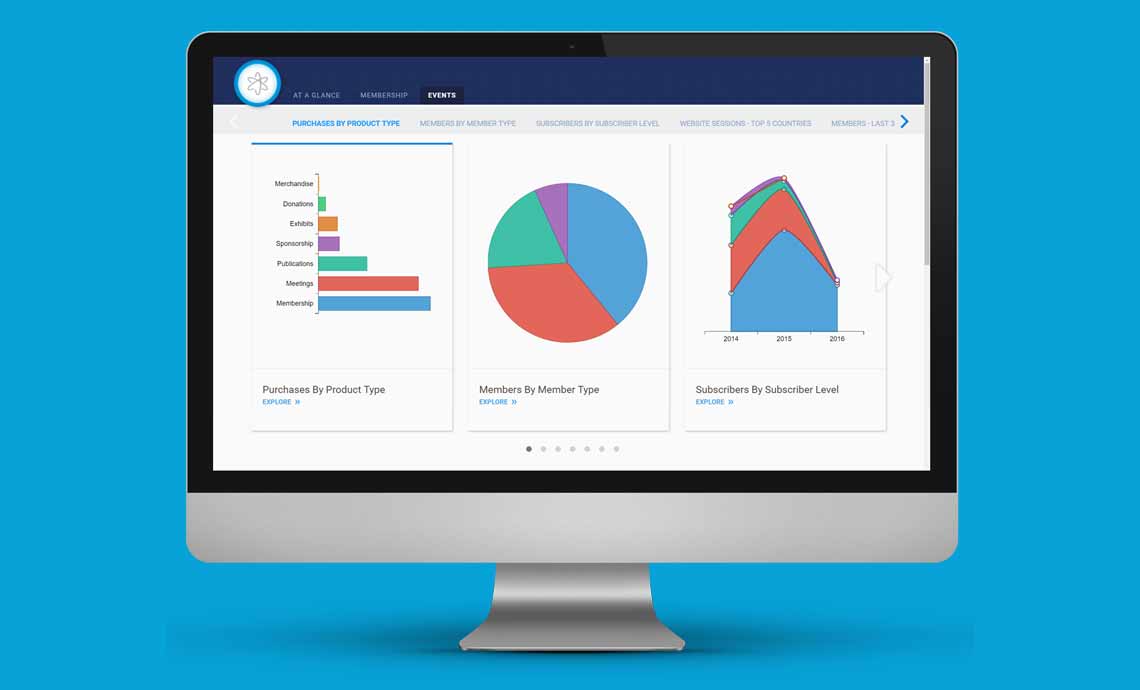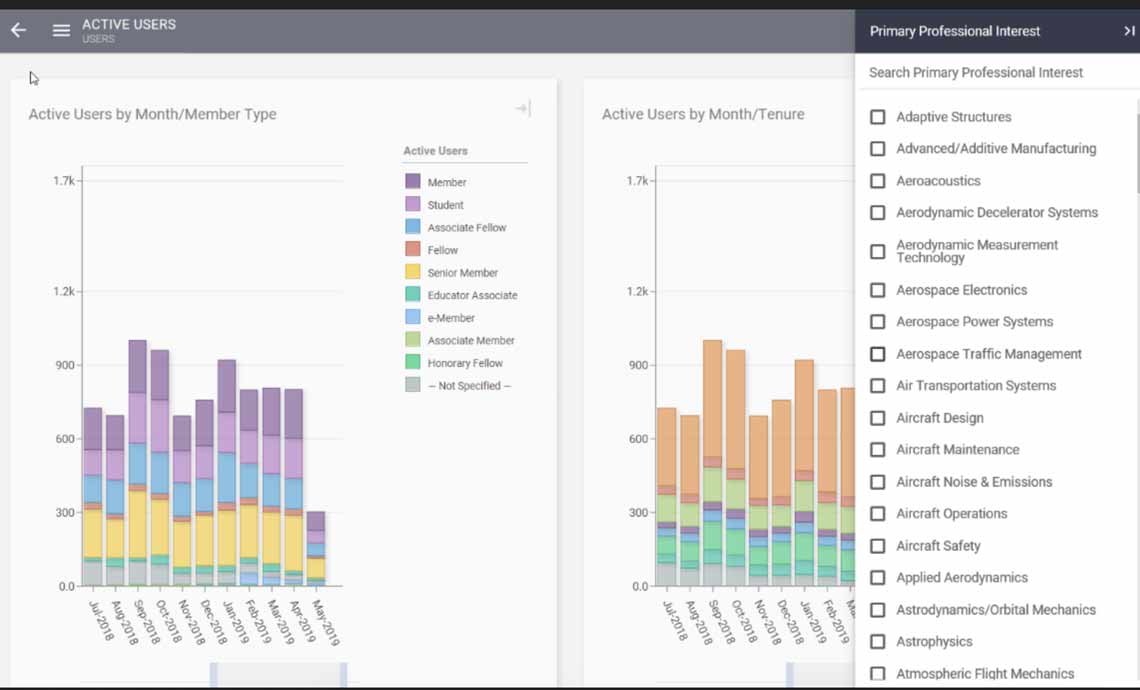Data continued to make big strides in 2017, both in the broader market and for associations and non-profits. New approaches reduced the time and investment required to see real value from data initiatives, and more than ever, organizations focused on building a data culture (“What is data culture and why is creating one worth the effort?” was our most highly clicked Tweet this year.)
Below are some data predictions for 2017 that turned into reality, and have set the foundation for building a data culture in 2018:
-
-
- Movement to the cloud
All aspects of data – from storage to analysis and visualization tools – trended towards the cloud. This is unsurprising because cloud offerings have a number of advantages over on-premise solutions: mobile access, no heavy contracts, reduced complexity for administering and configuring computing resources, and payment structures that allow organizations to pay for what they need as they go. Cloud data solutions are flexible, budget-friendly, and robust, so if data is a priority for your organization in 2018, consider the available cloud options. - Aggregation of digital unstructured data
Unstructured data (e.g. social media or community posts, text survey responses, publication or webpage content, images and videos) represents a rich and large set of data that organizations can collect and store. Historically, the lack of structure has made these sources difficult to quantify and analyze. With better analysis tools and more education about the power of unstructured data, 2017 saw organizations start to generate real value from this previously untapped wealth of information. - Immediately gratifying analytics
Decision-makers need new data and analysis as soon as it becomes available, so 2017 brought better, more immediate analytics. Along with improved, faster tools for near real-time data analysis, the data visualization market saw a downturn in the demand for long, arduous data discovery processes and expensive tools that require lengthy setup. New technologies made it easy to get set up and experience the quick ROI that everyone’s after.“The time between asking a question and getting an answer should be measured in seconds or minutes, not week or months.” – CIO Report
- Business evaluation of big data projects
2017 brought more accountability to data initiatives. Platforms sharpened their focus on delivering value by helping more end users to feel comfortable accessing, understanding, and interpreting data to make decisions. If a tool underperformed or didn’t deliver a ROI in a timely manner, chief stakeholders and board members were quicker to look at alternatives. If one data analytics platform wasn’t working, they were almost certain to find another that did.
- Movement to the cloud
-
One additional 2017 trend not on the list of predictions but worth mentioning:
-
-
- Data at the center
Although the concept of making the data platform the center of the technology ecosystem has been discussed in conference sessions and blog posts for the past several years, 2017 was the year that tools like Nucleus gave associations and non-profits of all sizes a practical and easy way to commit to this philosophy.
- Data at the center
-
Each of these five trends supports easier, more accessible data that is simple to interpret and act upon. 2018 will progress along same theme, creating opportunity for easier and more powerful analysis that’s instant and accessible from anywhere. Perhaps your organization was on the forefront of 2017’s data trends, or maybe you’re poised to capitalize on these trends and begin building a stronger data culture in 2018.
Cheers to another step forward in empowering teams and individuals to make smart, informed business decisions. Happy New Year!


